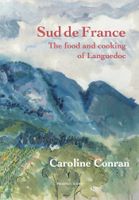Advertisement
Charcuterie
Published 2012
Now we come to the cold times
When ice and snow come and mud
And the little birds are mute,
For not one is inclined to sing.
In Languedoc, with cold weather comes the pig-killing, or at least this is how it always was. The friendly and much-prized family pig, often called ‘the minister’, was cosseted all through the year, to make sure he was in good health. The owner would rub him with wads of straw and feed him up to guarantee he was enormously fat and happy. Pigkilling day, la fête du cochon, was carefully chosen. It had to be cold, dry and crisp, and coincide with the correct phase of the moon. It usually took place in late autumn or early winter, after the pigs had guzzled on chestnuts or acorns, gathered in the woods by the young children, and on the windfall apples in the orchard. It was once the biggest family fête of the year – everyone loved the excitement and took the shrieks of the pig, burning hair, spilling blood and oozing guts in their stride. Called tue-cochon, pele-porc, pela porc or, more poetically, les noces du cochon – the pig’s wedding – this was the day to make charcuterie for the winter – hams, boudins, fresh saucisses and saucissons secs – and also to thank close neighbours and family for their help in this huge task, and for any other help, by providing them with a feast – almost always the same food, a dish called frésinat or fréginat. The neighbours who helped were called les voisins du porc.

